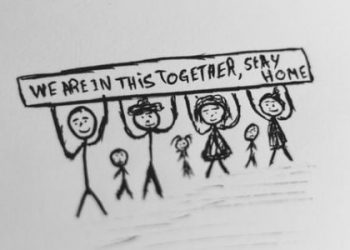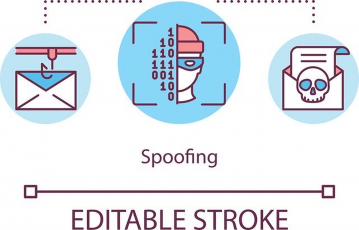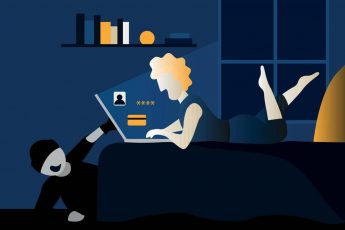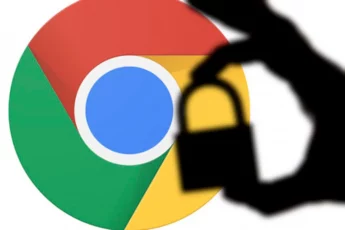Public WiFi is undoubtedly what the current generation of internet users need. That means WiFi is a necessity today. But you need to understand the dangers it has, too.
Accessing WiFi isn’t a big problem when at home. In fact, it’s easy and secure to connect. Moreover, it usually’s uncongested. However, whenever you venture out, the story is different.
Free public WiFi is almost everywhere. In public libraries, airports, coffee shops, and even national grocery stores now have free WiFi hotspots.
They’ve merely made life a little easier, but did you know that public WiFi poses some serious security risks to your personal information on your smartphone and laptop?
There’s no denying that the urge to connect to a free internet down the street and surf the web while taking your cup of coffee is compelling.
Picture this.
You’re sited in that coffee shop down the street taking your favorite cup of coffee on a pleasant morning, you haven’t read the emails, and you’re in a free network zone. Usually, most folks connect without even giving it a second thought. But, unfortunately, the risks associated with public WiFi indeed outweigh the benefits.
But what’s public WiFi? Are public WiFi networks safe?
Unlike home WiFi networks that are usually password-protected, most public WiFi networks are strictly set up for convenience and not security purposes. Mostly, the idea with public WiFi is to ensure that customers can easily connect and enjoy their stay.
But many people do not know the dangers of using public WiFi. Hence, they keep connecting to them.
Fortunately for you, we’ve got your back covered as we’ll let you know all the possible public WiFi dangers and how to stay safe on public WiFi. This detailed guide will also cover whether you can get a virus from public WiFi.
To also facilitate our readers who might be in a hurry as they land on this page, we’ll start with the quick guide below;
Quick public WiFi protection guide

If you want to stay away from the dangers of public WiFi, you should ensure that you practice the following;
- Whenever on public WiFi, ensure that you use a VPN app. (We always recommend ExpressVPN as the ideal VPN to use).
- Ensure that you confirm its real name before you connect to a WiFi hotspot to avoid connection to other similarly-named networks that could be a trap.
- You must ensure that your device’s firewall is turned on. It helps to keep off hackers from accessing vulnerable ports. If you do not use a VPN, activating your firewall is a must to do and not an optional thing.
- You should also ensure that you use SSL connections all the time on any website while on public WiFi to encrypt your incoming and outgoing information.
- Always remember to turn off sharing when on an open WiFi connection.
- As a rule of thumb, you should install legitimate antivirus and malware apps on your device.
- Lastly, your device’s WiFi should be turned off immediately when you’re not using the internet anymore.
Perhaps, in a flash, you now know what you need to do to stay safe when on public WiFi. But to be even safer, you need to understand all the risks associated with using public WiFi in detail.
Moreover, you need to know all the possible public WiFi attacks. Want to go the extra mile? Excellent for you. Below you will learn everything about public WiFi security risks and how you can protect yourself if you need to use one.
Let’s start with how hackers can exploit free public WiFi.
How hackers use free public WiFi

You do not need to be a hacker yourself to beat a hacker.
All you have to do is ensure that you always stay ahead by merely understanding how identity thieves and hackers take advantage of free public WiFi users.
Here are some of the ways they use;
- Fake hotspots – As the name suggests, it is much more like luring toddlers with candy! A hacker can create a fake hotspot, and since most of us don’t even think twice before connecting, you can get yourself right into the trap of a hacker.
- File sharing – Hackers can also use open file-sharing networks to infect your device with malware and other viruses. That way, they create an avenue into your system and start gathering information without your knowledge.
- WiFi pineapple – WiFi pineapple is a devious piece of hardware meant for network auditing when testing a network’s security setup. However, hackers use it to set a false access point and perform man-in-the-middle attacks. A hacker will set up a wireless access point with only a USB and an active internet connection. That way, they then get to monitor all unprotected data traffic.
- Peeping toms – Once you connect to a network having a hacker on it, without protection, the chances are that they’ll be seeing everything you do online. That includes your passwords, sites you visit, and personal information. They can open other fraudulent accounts bearing your name alongside committing many other crimes with that information. Sometimes, it’s known as the man-in-the-middle attack. Here the hacker may change your information along the way.
- System upgrade alerts – Most folks think that an instant system upgrade could be the way to go to be safer. But it could be a hacker in sheep’s clothing. Therefore, when you’re connected to public WiFi, do not trust an alert or click on that. It could be malware in disguise rather than an upgrade.
Now that you’re aware of the avenue that a hacker can use to get access to your device in a public WiFi, we can proceed to see the associated public WiFi threats. Here are some of the dangers and risks associated with free public WiFi that you must be aware of.
Risks of using an unprotected public WiFi

You must remember that the same features that make a public WiFi network desirable for you make it desirable for hackers.
For instance, free WiFi doesn’t require authentication for it to establish a connection. Therefore, that’s an excellent opportunity for hackers to seamlessly access any unsecured device on the network.
When on public WiFi, you must be aware that you may be vulnerable to attacks. Here are some of the most common dangers of using public WiFi;
1. Access to personal information
As noted above, connecting to a public WiFi does not require any login credentials, meaning that the service lacks authentication. Therefore, it’s a tempting avenue for hackers as well to try and obtain access to any unsecured device that uses the network.
For instance, if your device’s file sharing is turned on, anyone can easily connect to your device and what they can do is anybody’s guess.
One of the ways that can be used to steal your information is via a man-in-the-middle attack. It happens whereby the hacker intercepts your connection when you’re sending information through a WiFi router.
Imagine a scenario whereby you load your bank account login, email, and social media details only for the hacker to be looking at them. With such information in the hands of a hacker, you can be in serious trouble.
2. Distribution of malware
Another risk that you can expose yourself to when using free WiFi is your device being infected with malware. The hackers can also use the WiFi network to spread malware to your device that will, in return, be used to capture your personal information.
For instance, if your device’s file sharing is turned on, a third party can access your folders once you’re connected to the free public WiFi. Even worse, the installed malware can run on your device without you noticing.
3. Intercepting web traffic and messages
Hackers can intercept unencrypted messaging apps and all the requests you send to a website. Others will go the extra mile and monitor such traffic to extract all the useful information.
Yes, most commercial websites and messaging apps nowadays encrypt their traffic, but the fact is that many still don’t. Therefore, to ensure that you stay on the safer side of the coin, you should always ensure that the app you go with uses stealthy encryption protocols.
For instance, WhatsApp messaging app features end-to-end encryption, meaning all your messages are secured from third parties. To help you choose the best messaging app, ensure that the developers enjoy a formidable reputation.
The interception of information could result in even worse scenarios. That is why it is among the public WiFi dangers you should be most concerned about. Imagine your sent information being intercepted; they can alter the purpose of data sent and give different directions. How about altering the delivery of the product you just ordered to their apartment instead of yours? That is too big a risk to take for free internet.
4. Snooping and sniffing
That’s how it sounds like – snooping and sniffing. Hackers can go as far as to buy some special devices and software kits that can aid in eavesdropping on several public WiFi signals.
They use a technique to access almost everything you do online, including the websites you visit (including all the information you fill out on such webpages). A hacker can also get your login details or even can hijack your accounts through WiFi snooping.
5. Exposure to worms
Worms attack is not a new term when it comes to cyber-attacks. Worms are more like viruses that focus on a program to attack for compromising a system all by themselves.
On free public WiFi networks, several computers are connected simultaneously in time to the same network. One of the computers could be having a worm, and therefore you are at risk of the worm traveling from such a device to your device.
6. Packet sniffers
As much as the name sounds amusing, the practice is a different story. Packet sniffing involves a technique whereby a hacker analyzes the data packets that are usually sent over unencrypted networks (free public WiFi).
Hackers sieve and see the type of data they contain, and the chances are that a hacker will manage to get your social media password if they analyze the correct packet.
The entire process is made even easier because free tools can help analyze such data packets. Wireshark is one of many examples of such a tool.
7. Sidejacking
Sidejacking, which is also known as session jacking, is not a common threat, but some hackers can go as far as using it. It’s a technique whereby hackers use packet sniffing and then target your data packets that have cookies.
For instance, they may target the cookies associated with the login process of several online platforms. For example, a hacker could intercept cookies sent to your computer when you log into your bank account. A hacker can pretend to be you with such information and log into your account without even your bank suspecting it.
8. Shoulder surfing
Hackers sit strategically in areas offering free WiFi to get an eye on common users’ usernames, passwords, bank account pins, and other essential information.
Anything can happen in a crowded place, and if you leave your device unattended, someone can even install malware on it physically. Therefore, it is a no-brainer to be watchful and careful.
Ways to protect yourself on a public WiFi

We can all agree that using free public WiFi has its share of disadvantages to the extent that it’s not advisable to even think about using one.
But if your network provider has lousy coverage or you need to use public WiFi for any other reason, you must take precautions before connecting to public WiFi.
Below you go with some essential security practices to ensure that you’re secure when connected to a public WiFi;
1. Equip your computer with anti-malware/antivirus protection
All devices you use to connect to a public WiFi should have installed quality antivirus/anti-malware software.
One of the threats of public WiFi is vulnerability to viruses and malware. Therefore, to effectively counter them, you must install the best antivirus on all your devices.
Also, you must ensure that you keep your device’s security program up-to-date always. That way, it will be able to take care of the latest malware threats and let you avoid WiFi security threats without you doing anything manually.
2. Use a VPN
Using a Virtual Private Network (VPN) is arguably the most effective way to stay safe and secure on free public WiFi. A VPN merely encrypts all the incoming and outgoing data transfers on your device. It hooks your data to a secure server, making it difficult for anyone to snoop on your details.
Therefore, if you need to use public WiFi and you mind your security, you must use a VPN. A hacker can’t monitor your internet traffic with a VPN, even when connected to an unsecured network.
Yes, if they go after taking some serious pain, hackers can break any encryption level. But then why would they go after breaking stealthy encrypted levels when they can get hold of easy targets. But, of course, you don’t want to be the easy target, and the best thing to ensure is to install the best VPN on your device.
3. Enable firewalls
There’s no denying that firewalls can be annoying sometimes, but when it comes to free public WiFi, they’re indeed a “necessary evil.”
Once you turn on your device’s firewall, it helps prevent any unauthorized external access. Moreover, firewalls can protect your device from any data-based malware.
However, it would help if you kept in mind that a firewall, on its own, won’t provide you with the high-end protection that you might be looking for. But when it’s used with a strong anti-malware/antivirus program and a VPN, then you can be assured of security on public WiFi.
4. Only use HTTPS websites
The question of which one you should use between an HTTP and HTTPS site should have been long answered. Basically, the former is not secure, and when you’re connecting to a public WiFi, it should never be among your browsing preference.
Always ensure that you connect to a site with a URL that starts with “HTTPS” and not “HTTP.” The benefit with HTTPS is that once you connect to a public WiFi, folks on that similar network won’t be able to snoop on data traveling between your device and the server of that website. It’s a different case with HTTP, whereby people with little tech knowledge can easily watch everything you do.
5. Turn off file sharing
Luckily for you, the risks that can be brought about by leaving your file sharing open are at your fingertips. Once you step out of your home, it’s better always to turn off file sharing both on your mobile and any other computing device you’re carrying.
Windows users can locate file-sharing settings in the Control Panel, and for macOS users, sharing settings are in the System Preferences. Also, for Windows, you can disable it by simply selecting the “public” option if you’re connecting to a new network for the first time.
6. Keep WiFi turned off when not in use
For your better safety on public WiFis, if you’re not using WiFi, then make sure it’s turned off.
You don’t want to connect to unprotected WiFi networks for no good reason, even when you’re not using the internet. Someone could gain access and do severe damage, especially if file sharing is enabled.
Protect yourself at home

As much as it sounds like public WiFi is the real danger zone, you shouldn’t let your home network be vulnerable.
You must also take some steps to keep your home WiFi secure. Making your home network more secure is not a time-consuming task either. For instance, you can protect your network password with WPA2 encryption.
Here are some of the ways that you can use to protect your home WiFi network.
1. Change the default username and password
Almost every wireless router uses the default username and password being ‘admin’ for allowing the users to access settings.
The reason that most manufacturers use that same default login information is precisely why you need to change yours. To avoid any intruders into your network, you should change it immediately.
2. Change your router’s default SSID
Your router’s Service Set Identifier (SSID) is merely the name of your network. Maintaining the default SSID is a clear indication that you have taken your security lightly, making you an easy target for hackers.
Therefore, ensure that you rename your network connection with something that is not so friendly to any scamming folk.
3. Turn on the network encryption
Encryption is your best friend for stealthy online safety; therefore, ensure that your router supports some form of encryption. Ideally, you should set it to WPA2 or WPA encryption.
4. Enable firewall
Most people assume that routers have their firewall turned on by default, but it’s always advisable to double-check and ensure that it’s turned on.
Conclusion
By now, you must be aware that you start risking your data monitoring and interception once you connect to free public WiFi.
Using public WiFis to their advantage is among the most used hackers’ techniques to lure prey into a trap. Therefore, you need to be extra careful when connecting to any available WiFi network as you don’t know whether you could be headed right into the hands of a hacker.
That would be a terrifying thing, even if you were to imagine. Fortunately, you’ve now learned several ways that you can use to connect to such networks when necessary securely. That said, the best thing you can do is avoid free public networks.






